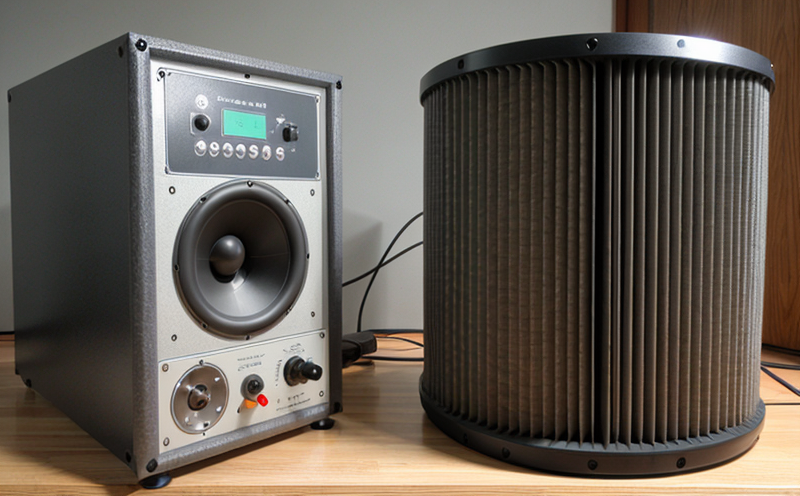ISO 1940 Rotor Balance Quality Testing of Propulsion Systems
The ISO 1940 standard is widely recognized as a cornerstone in ensuring the balance quality and durability of rotating machinery, particularly propulsion systems. This test protocol is essential for verifying that rotating components meet stringent vibration and imbalance specifications, which are critical to prevent mechanical failures and extend operational life.
Propulsion systems, such as those found in marine vessels, demand high precision and reliability. The ISO 1940 standard focuses on balancing the rotors by measuring their eccentricity and ensuring that they operate within specified limits. This balance is crucial for maintaining smooth operation and preventing excessive vibration that can lead to premature wear or failure.
The testing process involves several key steps, including the preparation of the rotor, installation into a balancer, and measurement using specialized equipment such as laser-based balancing machines. The balance quality is determined by measuring the unbalance forces at various points around the rotor circumference. Once the imbalance is identified, corrective measures can be taken to adjust the rotor.
The importance of this testing cannot be overstated in the context of marine propulsion systems where continuous operation and reliability are paramount. By adhering to ISO 1940 standards, manufacturers and operators ensure that their equipment meets international quality benchmarks, enhancing safety and operational efficiency.
Compliance with these standards is particularly important for quality managers and compliance officers who need to ensure that their products meet the necessary requirements for export or use in specific markets. For R&D engineers, this testing provides critical data for optimizing designs and improving performance. Procurement teams benefit from knowing that suppliers are adhering to recognized international standards.
The precision required by ISO 1940 means that only advanced balancing equipment is suitable for the task. This equipment must be capable of detecting minute imbalances and providing accurate feedback on corrective actions. The testing process itself involves several stages, including initial setup, measurement, analysis, and adjustment. Each step requires careful execution to ensure reliable results.
The standard specifies that balance quality should be measured at specific rotational speeds and angles, ensuring consistency across different operating conditions. This comprehensive approach ensures that the propulsion system can withstand various operational scenarios without compromising performance or safety.
By adhering to ISO 1940 standards, manufacturers gain a competitive edge by demonstrating their commitment to quality and reliability. This is particularly important in the maritime sector where trust in product integrity is vital for both operators and passengers. The use of this standard also facilitates smoother international trade, as it aligns with global quality benchmarks.
In summary, ISO 1940 Rotor Balance Quality Testing of Propulsion Systems is a critical process that ensures the reliability and longevity of marine propulsion systems. By following these standards, manufacturers can produce equipment that meets stringent balance quality requirements, enhancing operational efficiency and safety.
Benefits
Ensures high precision balance quality in rotating machinery
Reduces vibration, enhancing safety and performance
Extends the operational life of propulsion systems
Facilitates international trade by meeting global standards
Provides reliable data for optimizing designs and improving performance
Eases compliance with international regulations and industry requirements
International Acceptance and Recognition
The ISO 1940 standard is internationally recognized, ensuring that the balance quality of rotating machinery meets global standards. This recognition enhances trust in product integrity and facilitates smoother international trade. Many countries have adopted this standard as part of their regulatory frameworks, further emphasizing its importance in the industry.
Compliance with these standards is not only beneficial for manufacturers but also for operators who rely on reliable equipment. The widespread acceptance of ISO 1940 ensures that the balance quality of propulsion systems meets international requirements, enhancing operational efficiency and safety.
Use Cases and Application Examples
The application of ISO 1940 Rotor Balance Quality Testing is vast and includes various marine propulsion systems. For instance, this testing is crucial for verifying the balance quality of propellers in ships, ensuring that they operate within specified limits to prevent excessive vibration.
In addition to shipboard applications, this standard is also applicable to land-based machinery such as generators and compressors. The precision required by ISO 1940 ensures that these machines perform reliably under various operating conditions, enhancing their operational efficiency.
For quality managers and compliance officers, adherence to this standard provides a clear pathway for ensuring product integrity and reliability. R&D engineers can use the data obtained from these tests to refine designs and improve performance. Procurement teams benefit by knowing that suppliers are adhering to recognized international standards, ensuring consistent quality across different products.





